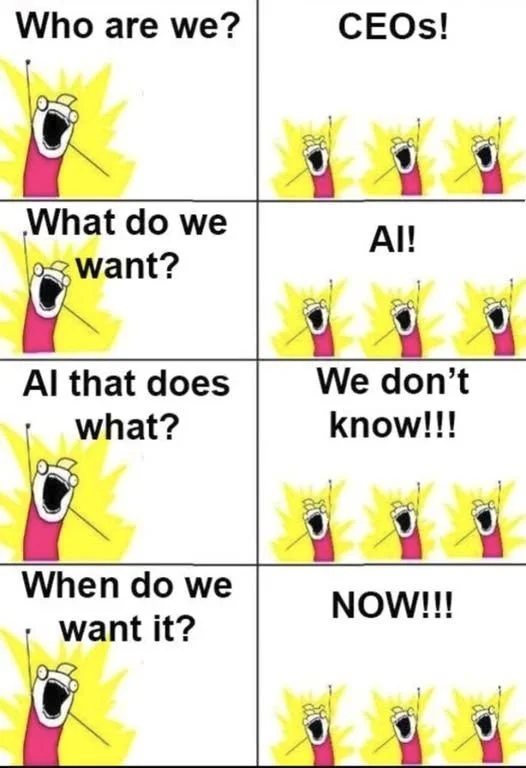A Reality Check on AI Vibe Coding Tools
The real question isn’t whether you’ll use AI vibe coding tools. It’s whether your competitors will validate faster than you do.
Right now, founders and execs are being told the same thing: cut costs, ship faster, and “use AI” to do it. Every day your runway shrinks. Every week, another competitor announces an AI-powered feature. You’re stuck between building well and shipping fast — and pulling engineers off the roadmap feels impossible.
That’s exactly where tools like v0 and Lovable.dev come in. They’re not magic. They’re not replacing your team. But they are leverage — and they might be the difference between testing an idea tomorrow or watching someone else launch it first.
The new product roadmap: why you should care
AI vibe coding isn’t a replacement for your team — it’s a force multiplier that gets you moving faster.
For the Founder
Your job is to make decisions with imperfect information. Vibe coding gets you better information, faster. Instead of spending weeks on a half-baked prototype, you can generate a functional version in a day. Put something clickable in front of customers before your engineers write a single line of production code.
This isn’t just speed. It’s knowing whether what you’re building even matters before you bet the company on it.
For the Head of Product & Design
These tools reset the prototyping and validation loop. The conversation shifts from “Can we build this?” to “Is this the right thing to build?”
A designer can hand off a working prototype, not just a static mock.
PM or Research can validate flows with real users, not screenshots.
Engineering spends less time clarifying and more time building the right thing.
For the Head of Engineering
The biggest win is velocity. You get ALMOST production-ready code* so engineers can focus on architecture, integrations, and business logic.
This isn’t about AI writing your whole codebase. It’s about killing the boring stuff so your engineers can push the business forward.
The gaps you can’t ignore
Here’s the fine print no one’s putting on their demo slides:
No Figma connection: Designers aren’t ditching Figma. You still need it for flows, collaboration, usability testing, and design system enforcement. Expect context-switching.
Design system drift: If you’re early-stage and don’t have a design system, vibe coding tools will make your UI spiral into inconsistency fast. You’ll get random styles, layouts, and patterns that are impossible to scale. If you do have a design system, these tools won’t automatically know your component library. Unless you connect them (and most only work if your system is built in React), you’ll spend extra cycles cleaning up mismatched components. The bottom line: vibe coding without a design system is chaos, and vibe coding with one only works if you integrate your components up front.
Accessibility blind spots: These tools don’t add alt text, contrast checks, or ARIA roles (the behind-the-scenes labels that make apps usable with screen readers). You can prompt for WCAG compliance, but don’t expect perfection.
*React only: If your stack isn’t React, you’re out of luck, as the vibe-coding tools currently do not support those for front-end code generation. However, you can always use your preferred AI tool of choice (Claude, Copilot) to convert code, if possible.
Quality check required: The code may compile, but it’s not always production-ready. Engineers still need to review for performance and security.
Use these tools without guardrails and you’ll just accelerate inconsistency and tech debt.
A blunt reminder for founders
Vibe coding tools are for idea validation, not product-market fit.
Validating a concept: Does this solve a pain point? Do customers light up when they see it? That’s the “should we build this?” phase.
Not product-market fit: A prototype isn’t proof. Product-market fit means paying customers, retention, and growth proving your product is indispensable.
Not pricing validation: “I’d pay for this” means nothing until someone actually does. Pricing is validated with revenue, not promises.
Think of vibe coding as a conversation starter with customers. It gets you in the room. It doesn’t close the deal.
Closing thought
If you’re a founder staring at your burn rate, tools like v0 and Lovable.dev aren’t hype — they’re leverage. They won’t replace your team. They won’t magically give you real customer demand.
But they will help you move faster, waste less, and test smarter.
The real question isn’t whether you’ll use them. It’s whether your competitors will validate faster than you do.

